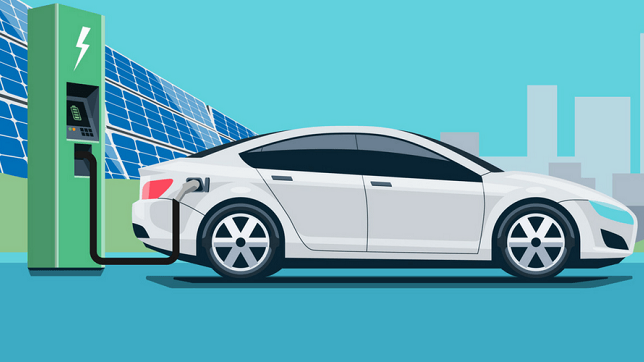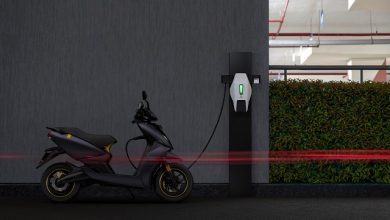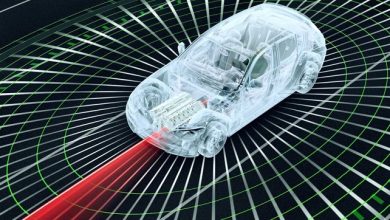How desiccant dehumidifiers are ramping up the process of the EV revolution

For the past few years, there has been much anticipation and discussion around Electric Vehicles. From Industry experts to the government, everyone is trying to educate about the benefits of buying EVs. Electric Vehicles resort to electric motors; hence it does not emit harmful pollutants as done by the internal combustion engine, which generates power by fuel burning. As a result, EVs are addressing the issue of global warming and comprehensively contributing towards carbon footprint reduction. It has unanimously emerged as the suitable green and reliable alternative in the endeavour to protect the environment and sustain our resources as well.
The initiatives undertaken by the government are further magnifying the rising popularity of EVs. Progressive measures like the FAME II scheme and bold decision of bypassing BSV to leapfrog to BSVI to cap down the harmful emissions by the vehicles demonstrates the efforts to speed up the adoption of e-vehicles that will reduce the dependence on fossil fuels to bring down the pollution level emitted by the vehicles. The initiatives have turned in the favour of the people, as post-COVID-19 individuals are opting for personal vehicles to abide by the social distancing norms for safety reasons. As the government is chalking out the electric vehicle roadmap ahead, people are being wise enough to invest in EVs with a futuristic approach. Apart from this, automobile companies are also investing a lot of budgets, and from R&D to speeding up manufacturing to strengthen their offerings and contribute towards clean mobility.
Given that the country is gearing up for the EV revolution, it will necessitate the demand for manufacturing units where production and assemblage of electric vehicles can take place. To set the stage for the EV ecosystem, the government is working to get the infrastructure ready as soon as possible to become self-sustainable in the operating space. To achieve this goal, it is important to focus on quality battery manufacturing along with its supportive infrastructure.
As we all know that the battery is the revolutionary technology contributing to the high performance, enhanced driving range and environmental-friendly aspect of the electric car, it stays at the heart of an EV existence. To derive optimum performance from the vehicle, Lithium-ion batteries are being preferred for their stable and safer charging and discharging capacity as compared to the other variants of batteries available in the market. Therefore, the manufacturing of batteries must be thoroughly monitored, leaving no space for errors as it could result in poor quality batteries giving rise to performance as well as safety concerns.
As Lithium-ion batteries are made up of chemical components having a high affinity for moisture, if the menace of humidity is left unattended then it may result in the manufacturing of reduced quality batteries with inferior performance and can even become a matter of safety due to its high chances of explosion. The poor quality of the battery can further deteriorate the performance and efficiency of the vehicle and also intervene with its prospects of acceptance.
Therefore, to address the issue of humidity, the manufacturing of batteries must be carried out in highly controlled environmental conditions with less than 1% humidity. This obligates the need for a Dry Room that is supported by the Environment Control Dehumidification System which ensures the RH is maintained at less than 1% and less than 10% during the process of lithium cell manufacturing and battering assembling, respectively. The moisture control equipment in the Dry Room maintains an extremely low dew point, reaching up to -80 degrees Celsius for the ideal processing of hygroscopic and moisture-sensitive materials.
This lays underlying pressure on the manufacturing units to be well equipped and conform to the necessary environmental conditions required in the process of making a vehicle. In cell manufacturing, the Dry Room ingests approximately 45 – 55% of the total energy usage and is a huge operating cost. Hence, the energy efficiency of the Dry Room integrated with the Environment Control Dehumidification System is very critical and cardinal to the entire process. Dry Rooms, for time to come, are centered around this differentiation of energy efficiency yet, meeting of stringent low dew point requirements.
Here, the role of desiccant dehumidifiers comes to the forefront in amplifying the process of the EV revolution. As manufacturing bases will be the first step in laying down the foundation of the EV infrastructure and will be the place for the production of the vehicles, it will require very strict and controlled environmental conditions to avoid any form of faulty production. It will require maintenance of the right relative humidity (RH) value for which the manufacturing units must be installed with desiccant dehumidification technology to render the critical environmental conditions suitable for the production of EVs and their various parts.
The role of dehumidification application is not just limited to the production of lithium batteries. Its role is instrumental in the progression of the entire automobile sector. The entire car structure from tyre, engine, interior to the end finishing, every stage requires impeccable dry conditions. At all stages of a car production – engine testing room, tyre creel room, during safety glass manufacturing, and even at the paint booths, humidity and moisture control are the deciding factor in rendering error-free parts as well as contributing to the seamless functioning of the car.
Also, plastics such as ABS, Polycarbonate, Nylon, Acrylic, SAN, etc. used in an automobile have a high tendency to absorb moisture during every stage of manufacturing, transportation, storage and processing. Additionally, if the resins are not dried properly, it may give poor finishing to the surface and even compromise on physical properties giving incompetent structure and impeding the strength of the vehicle.
Hence, to produce competitive quality, high performing cars dehumidification technology must be installed in the manufacturing units to monitor the humidity consistency perennially.
Deciphering the significance of desiccant dehumidification technology in the EV manufacturing infrastructure, Bry-Air is playing a pivotal role in catalyzing the process of EV revolution by being the only Indian supplier of Dry Rooms. On one hand, it is speeding up the adoption of EVs, while on the other hand, it is strengthening the stance of Make in India and also fetching global recognition with its innovative dehumidification and moisture control solutions.
The introduction of Green Dry Purge technology by Bry-Air has further revolutionized Lithium-ion battery manufacturing across the globe. GDP dehumidifiers while achieving ultra-low dew point with the help of its excellent moisture control system in a most cost-effective and highly efficient way have assisted manufacturers unanimously throughout the world by facilitating optimum environmental conditions required for the production of quality, safe and long-lasting batteries.
India not falling behind in the league is determined to emerge as the first EV nation by 2030. Looking at the bolstering prospects of the industry, local manufacturers are gearing up to comply and match up to the rising demand of the automobile industry. In this transforming landscape, Bry-Air is ensuring safe and secure production of cars under strictly regulated moisture-free environmental conditions with the help of its desiccant dehumidification technology maintaining ultra-low dew points for regulating and achieving the desired humidity level.
Author:

Deepak Pahwa
Managing Director
Bry-Air (Asia)
Mr. Deepak Pahwa is the Chairman, Pahwa Group and Managing Director of Bry-Air (Asia). The Pahwa Group, where innovation is life, is the fastest growing Adsorption Technology Group in the world. Under his leadership, the group has filed 123 patent applications for 13 new technologies, at national and international level, 43 patent granted / already allowed.




